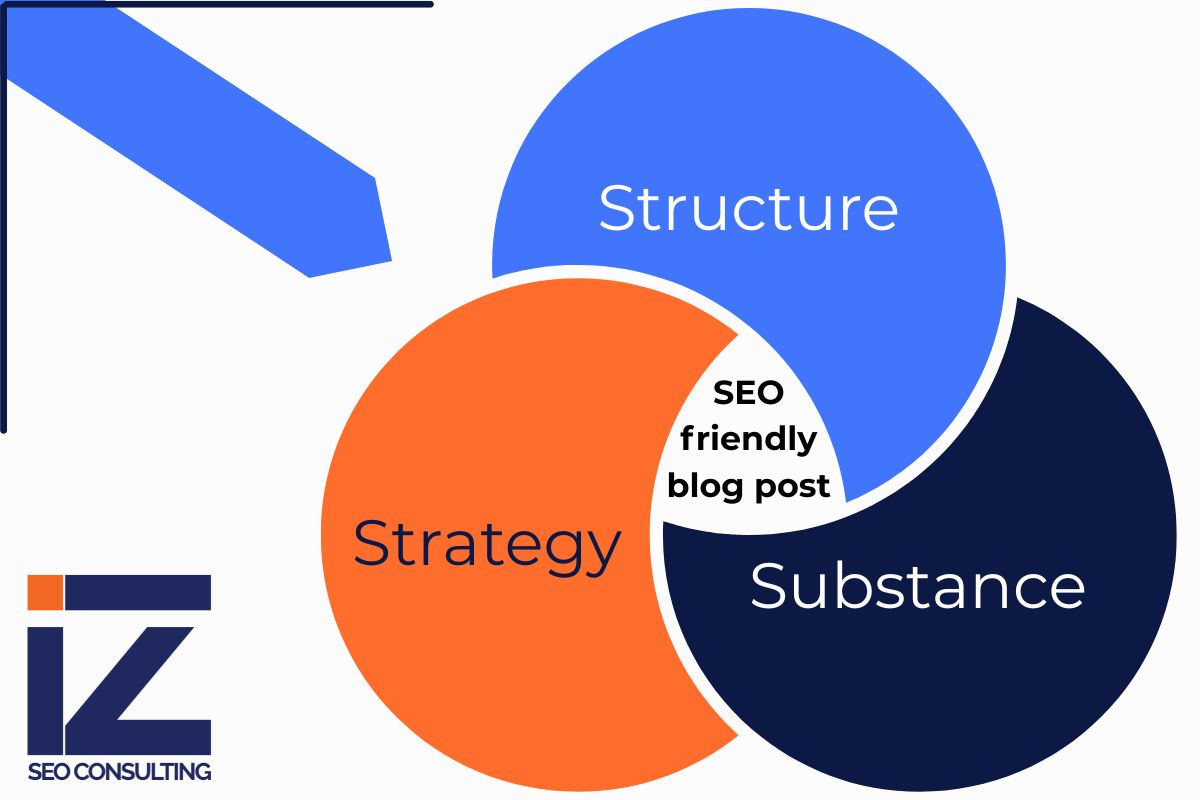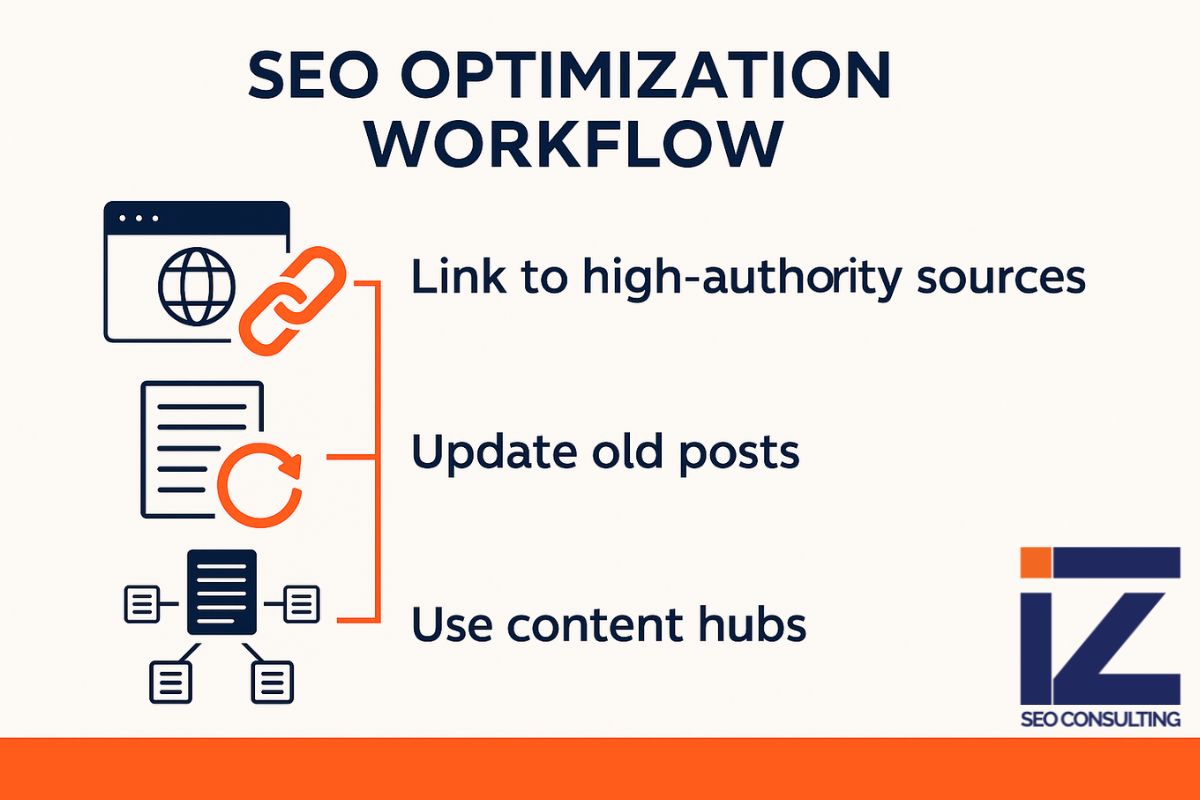Writing SEO-friendly blog posts isn’t about stuffing keywords or gaming algorithms. It’s about creating content that satisfies search intent, earns visibility, and keeps readers engaged. Let’s jump into how to write SEO-friendly blog posts that cover all the essentials, from strategy to structure to search performance.

How to Write an SEO-Friendly Blog Post That Actually Ranks
To write SEO-friendly blog posts that rank and convert, focus on three things: strategy, structure, and substance.
Start With Intent-Driven Keyword Research
Great SEO begins with understanding what readers are really searching for. Skip guesswork. Use tools like Google Keyword Planner, Ahrefs, or Ubersuggest for SEO keyword research, which can help you:
- Identify high-value, low-competition keywords
- Understand search volume and user intent
- Spot long-tail variations that reflect specific queries
When you’re looking to optimize blog post for SEO, keyword intent matters just as much as keyword volume, but don’t overdo it. Stuffing too many keywords can hurt readability and search performance.
Structure Content for Humans First, Then Search Engines
SEO-friendly blog writing follows a clear structure:
- Headline (H1): Includes the main keyword
- Intro: Hooks the reader and drops the keyword naturally
- H2s and H3s: Break content into digestible, scannable parts
- Paragraphs: 3–4 sentences max. No walls of text.
- Bullet points: Use only when they enhance clarity
Search engines favor structured, easy-to-read formats. So do people. If you want to write an SEO optimized blog, clarity and flow are your best friends.

Nail the On-Page SEO Basics
Don’t overlook the essentials:
- Use the primary keyword (e.g., seo friendly blog posts) 4–5 times throughout the post
- Include variations like “write SEO friendly blog post” or “SEO tips for writing a blog”
- Add internal and external links
- Optimize images with alt text
- Write a compelling meta description under 160 characters
Before anything else, the best SEO practices for blogs focus on getting the on-page basics right.
Write for Depth, Not Word Count
Word count isn’t the goal. Use as many words as necessary to cover the topic fully, and not one more. Avoid fluff and show expertise.
Examples of Real-World Value:
- Use case studies or platform names (e.g., WordPress, Medium, HubSpot)
- Reference real strategies that improve performance
- Cite relevant data only when it supports the takeaway
Content that hits all angles of a topic earns backlinks and time-on-page—two things Google loves.
Supporting Concepts to Take It Further
Common Pitfalls When Trying to Optimize Blog Post for SEO
Too many blog writers make the same mistakes:
- Overusing keywords: It’s called keyword stuffing, and it kills readability.
- Forgetting meta descriptions: Skipping this hurts click-through rates.
- Writing for bots, not people: Google is smarter than that.
- Ignoring mobile formatting: Over half of blog traffic comes from mobile.
If the content doesn’t feel natural to read out loud, it won’t perform, no matter how many SEO tips for blog posts you try to follow.
Pro Tip: Use Google Search Console to Identify Intent Mismatches
A pro move most bloggers skip: Look at your blog post’s performance in Google Search Console. Compare the impressions vs. click-through rate.
Low CTR? Your headline might not match the search intent.
Getting the on-page basics right is the first step to applying the best SEO practices for blogs.
Blog SEO Optimization Tips That Actually Move the Needle
- Link to high-authority sources like Moz, Backlinko, or Google’s SEO docs
- Update old posts: Evergreen content needs maintenance
- Use content hubs: Group posts by topic with strategic interlinking

Applying blog SEO optimization tips isn’t just about climbing the rankings—it’s about building sustainable, long-term growth. Use proven strategies to boost organic traffic and drive real, lasting results.
Frequently Asked Questions
What tools help analyze SEO performance after publishing a blog?
Several tools can track blog SEO performance, but each serves different purposes, like keyword tracking, technical audits, or traffic analysis. Some of the most effective options include Google Search Console, Google Analytics, Ahrefs, SEMrush, and Screaming Frog.
How long should it take for an SEO blog post to rank on Google?
There’s no guaranteed timeline, but the ranking speed depends on factors like domain authority, backlink quality, competition, and content relevance.
What are the most effective SEO tips for writing a blog that ranks?
Some of the most effective SEO tips for writing a blog include targeting long-tail keywords, writing clear and engaging headers, optimizing for mobile, and using internal links strategically. Always write with the reader’s intent in mind, not just search engines.
Can SEO-friendly blog posts still sound natural and conversational?
Yes—and they should. But balancing keyword use and flow is often trickier than it sounds.
Is it necessary to optimize every single blog post for SEO?
Not every post needs deep optimization, but skipping SEO entirely can limit discoverability, especially for high-value keywords.
How do I write SEO friendly blog post content without sounding robotic?
To write SEO friendly blog post content that sounds natural, focus on answering real questions, maintaining a conversational tone, and integrating keywords where they flow naturally. Prioritize clarity over keyword density, and never sacrifice readability.
Can beginners follow SEO tips for writing a blog without using paid tools?
Yes. Many SEO tips for writing a blog can be applied using free tools like Google Trends, Google Search Console, and Keyword Planner. Beginners can still create high-ranking posts by focusing on search intent, proper structure, and helpful content.
How important are internal links in SEO blog writing?
Internal links are crucial for site structure and user navigation, yet many bloggers underuse or misuse them entirely.
Wrap-Up: Take Action and Keep Improving
Mastering the art of SEO-friendly blog posts isn’t a one-time effort. It’s an ongoing process of learning, testing, and refining. Success in SEO friendly blog writing hinges on consistent action: following trends, analyzing user behavior, and delivering quality content.
Once a post is live, track how it performs. Use tools like Google Analytics and Google Search Console to monitor traffic, clicks, and rankings. If a post isn’t performing, tweak your title, adjust keyword placement, or expand sections that are underdeveloped.
It’s also critical to revisit old content. Update outdated information, improve internal linking, and re-optimize posts based on trends or performance insights. Small improvements can lead to major traffic gains over time.
Above all, don’t aim to trick the algorithm—aim to help the reader. When the content is genuinely useful, well-structured, and strategically optimized, search performance follows.
Need a second set of eyes or a strategy tailor-made for your niche? Visit Indexed Zone SEO to get expert support and take your blog to the next level.



